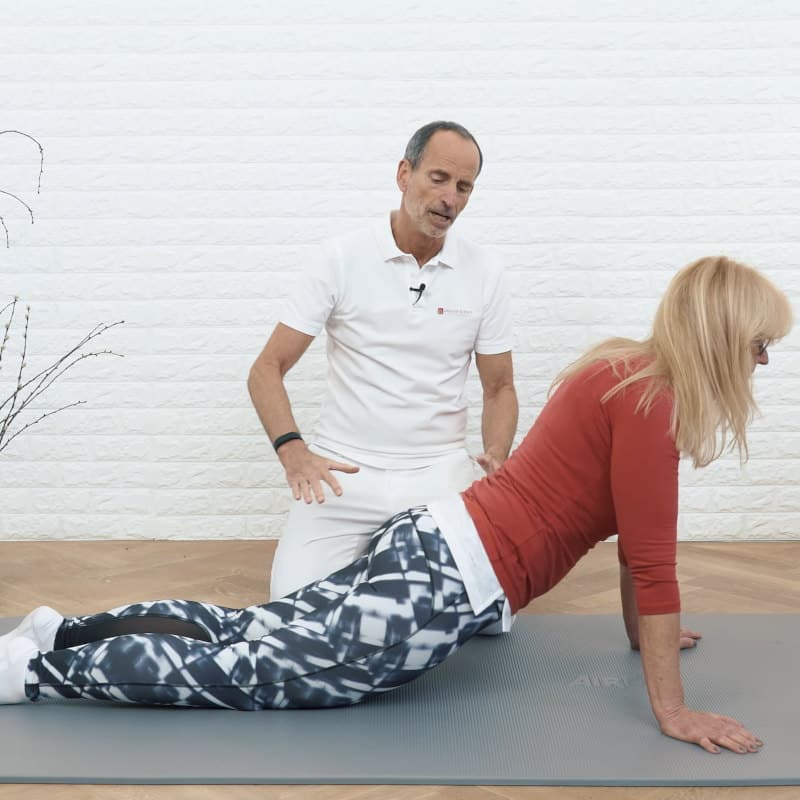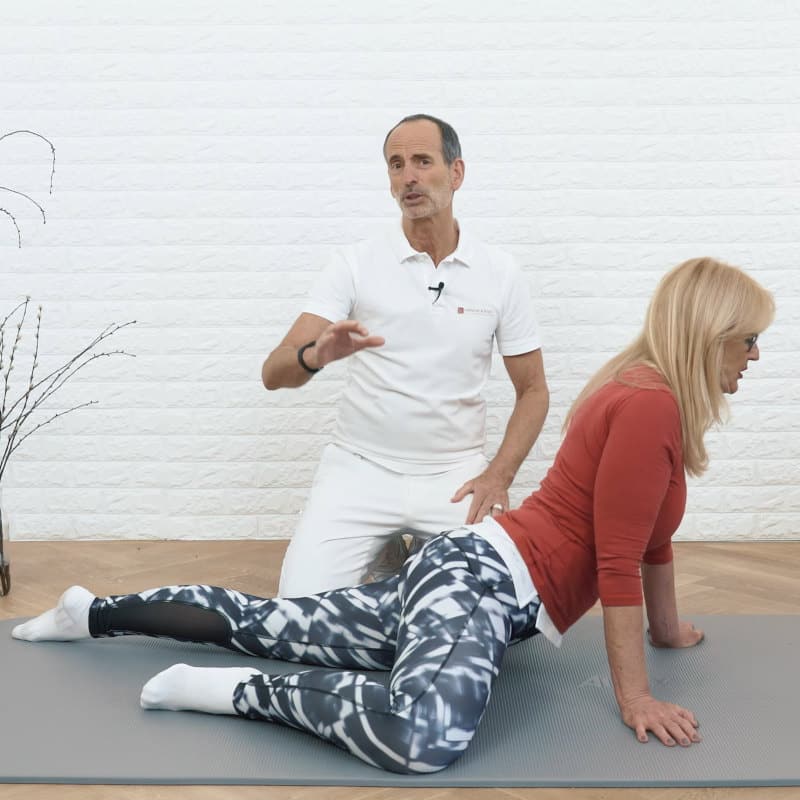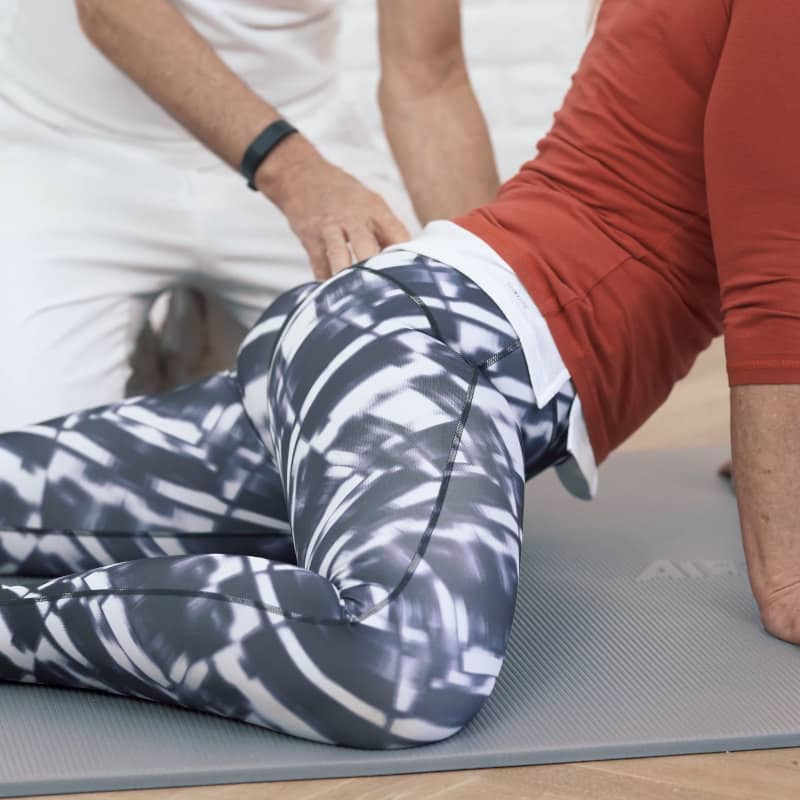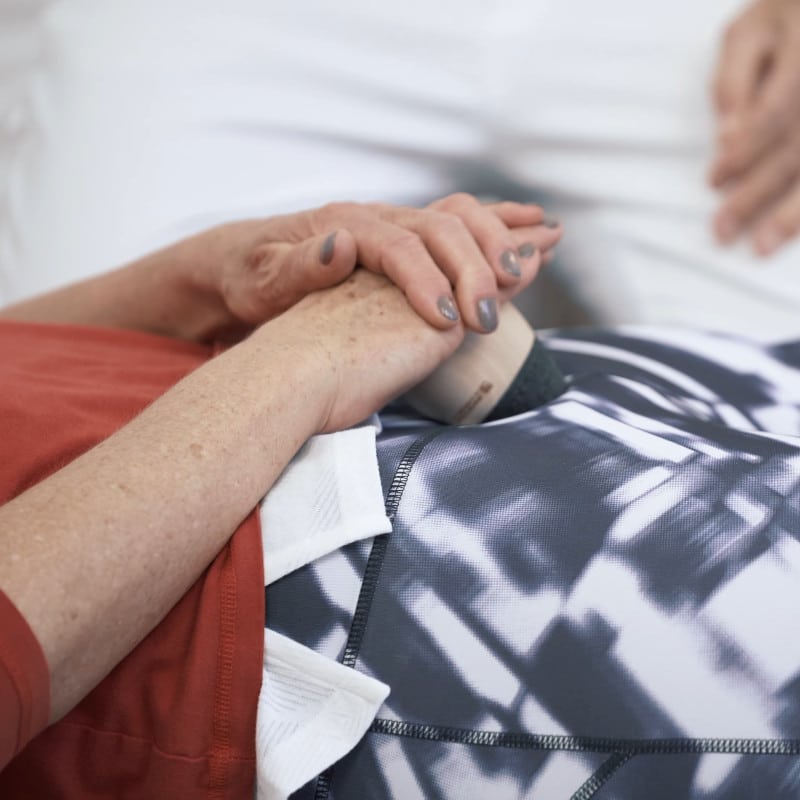Osteitis Pubis
Osteitis Pubis Exercises
Body Part:
Groin
Equipment:
Spherical Handle (Osteopressure Tool)
Level:
Beginner
Osteitis Pubis
Body Part:
Groin
Equipment:
Spherical Handle (Osteopressure Tool)
Level:
Beginner
Osteitis pubis (pubic bone stress injury) is an injury that causes painful inflammation in the groin and lower abdomen. Taking a break from the activity that caused the injury and regularly performing our exercises can help reduce the pain and swelling and restore your flexibility and muscle strength. You’ll need the spherical handle with the soft flat attachment from our Osteopressure tool set for our exercises. If you don’t have our tool, use a wine cork. Jump to our routine or keep reading to learn more about osteitis pubis.
Before we talk about osteitis pubis, it’s important to know about your pubic symphysis. The pubic symphysis is a disc-shaped joint that attaches the pelvic bones’ right and left sides at the front. The pubic symphysis sits above the male and female genitals in front of the bladder. The joint stabilizes the right and left pelvic bones, strengthening your pelvis to support your body. Compared to the movements our other joints make, the movements of the pubic symphysis are small. These small movements help the pelvis absorb shock when we walk or run. During pregnancy, the joint loosens so the pelvic bones can open up to facilitate childbirth.
Osteitis pubis is when the pubic symphysis or the surrounding tissues become inflamed.
Osteitis pubis is commonly caused by overworking the tissues in the pelvic area, which is where your hip abductor muscles and lower abdominal muscles are connected. Putting the muscles, tendons, and ligaments under constant strain can irritate the pubic symphysis.
Anyone can develop osteitis pubis. It’s a common sports injury, especially if you play a sport that requires kicking, turning, twisting, sprinting, reversing direction suddenly, or quickly changing speed. 1)
You may develop osteitis pubis if you are pregnant, have recently given birth, injured your pelvis, had surgery near your groin or abdomen, or your hips and pelvis are misaligned.
Because our pelvis is involved in so much of our daily movement, osteitis pubis can make basic activities painful. Common symptoms of osteitis pubis are:

Be careful not to arch your back. Keep your back straight as you go down.

Ready for next-level intensity? Raise yourself on your fists or put a yoga block under each hand.


You’ll need the Spherical Handle with the soft flat attachment from our Osteopressure tool set for this exercise. Use a flat-topped cork if you don’t have our tools.
Do our exercises for osteitis pubis 6 days a week, leaving 1 day for rest. In addition to our routine, alternating between icing and heating the affected area can help relieve pain.
So that your body can recover from osteitis pubis, take a break from whatever sport or activity caused the inflammation. Most cases of osteitis pubis go away in a couple of months.
This thorough foam rolling massage routine targets the hip and surrounding area. Relieve pain and tension so your ball-and-socket joints can move with ease.
Massage Hip Pain AwaySacroiliac joint dysfunction causes lower back discomfort and pain that radiates down your legs. This routine targets tight, stiff muscles and fascia to ease back ache.
Relieve Lower Back PainIf thigh pain is waking you up at night, you’ve changed the way you walk to avoid discomfort, or you’re experiencing pain and tension, this exercise routine can help.
Try Our Thigh Exercises